Depending upon the length and angles, quadrilaterals are classifieds in different ways. Let us check Different Types of Quadrilaterals and their definition, properties along with their diagrams. A quadrilateral can be explained using the below properties
- The sum of the interior angles is 360 degrees in a quadrilateral.
- A quadrilateral consists of 4 sides and 4 vertices, and also 4 angles.
- The sum of the interior angle from the formula of the polygon using (n – 2) × 180 where n is equal to the number of sides of the polygon.
The main types in a quadrilateral are squares and rectangles, etc., with the same angles and sides.
Various Types of Quadrilaterals
Mainly quadrilaterals are classified into six types. They are
- Parallelogram
- Rhombus
- Rectangle
- Square
- Trapezium
- Kite
Parallelogram
A quadrilateral is said to be a parallelogram when it has two pairs of parallel sides and opposite sides are parallel and equal in length. Also, the opposite angles are equal in a parallelogram. Let us take a parallelogram PQRS, then the side PQ is parallel to the side RS. Also, the side PS is parallel to a side QR.
Two diagonals are present in the parallelogram and they intersect each other at a midpoint. From the figure, PR and QS are two diagonals. Also, the diagonals are equal in length from the midpoint.
PQ ∥ RS and PS ∥ QR.
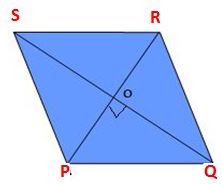
Rhombus
Rhombus is a quadrilateral when all the four sides of a quadrilateral having equal lengths. In a rhombus, opposite sides are parallel and opposite angles are equal.
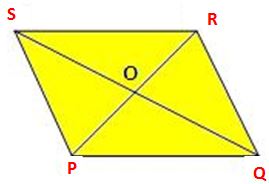
From the above figure, PQRS is a rhombus in which PQ ∥ RS, PS ∥ QR, and PQ = QR = RS = SP.
Rectangle
A quadrilateral is considered as a rectangle when all 4 angles of it are equal and each angle is 90 degrees. Also, both pairs of opposite sides of a rectangle are parallel and have equal lengths.
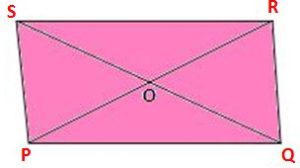
From the above figure, PQRS is a quadrilateral in which PQ ∥ RS, PS ∥ QR and ∠P = ∠Q = ∠R = ∠S = 90°.
So, PQRS is a rectangle.
Square
A square is a quadrilateral consists all the sides and angles are equal. Also, every angle of a square is 90 degrees. The pairs of opposite sides of a square are parallel to each other.

From the above figure, PQRS is a quadrilateral in which PQ ∥ RS, PS ∥ QR, PQ = QR = RS = SP and ∠P = ∠Q = ∠R = ∠S = 90°.
So, PQRS is a square.
Trapezium
A quadrilateral is called a trapezium when it has one pair of opposite parallel sides.
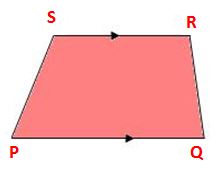
From the above figure, PQRS is a quadrilateral in which PQ ∥ RS. So, PQRS is a trapezium. A trapezium its non-parallel sides are equal is called an isosceles trapezium.
Kite
A quadrilateral is said to be a kite that has two pairs of equal-length sides and the sides are adjacent to each other.
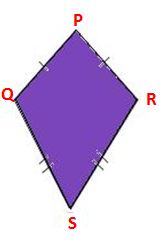
From the above figure, PQRS is a quadrilateral. PQ = PS, QR = RS, PS ≠ QR, and PQ ≠ RS.
So, PQRS is a kite.
Important Points to Remember for Quadrilaterals
Look at some of the important points need to remember about a quadrilateral.
- A square is a rectangle and also it becomes a rhombus.
- The rectangle and rhombus do not become a square.
- A parallelogram is a trapezium.
- Square, rectangle, and rhombus are types of parallelograms.
- A trapezium is not a parallelogram.
- Kite is not a parallelogram.